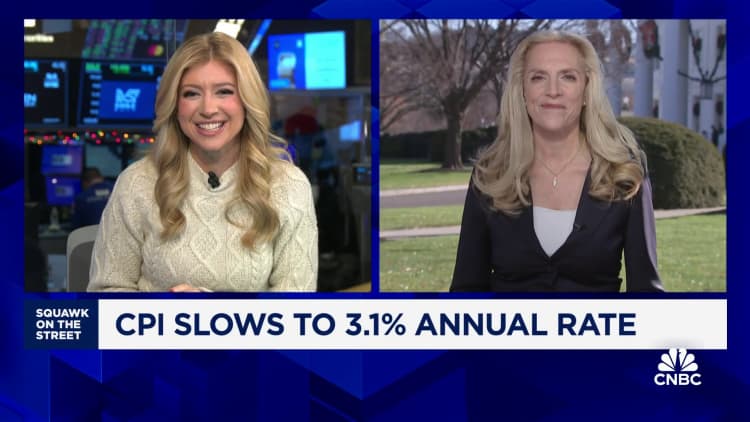Thomas Barwick | Stone | Getty Images
Inflation has been falling gradually across the U.S. economy.
This process, known as disinflation, means prices for consumer goods and services are rising but at a slower pace than they had been.
However, inflation has actually turned negative in some sectors, like energy. Deflation, as this dynamic is known, is the opposite of inflation: when prices are going down, not up.
Why some categories are deflating
Largely, deflation is happening on the “goods” side of the U.S. economy, or the tangible objects that Americans buy, economists said.
There are several reasons for this.
For one, a strong U.S. dollar makes imported goods cheaper. Some of those savings get passed on to consumers, said Mark Zandi, chief economist at Moody’s Analytics.
A strong dollar is a likely contributor to deflation in certain categories like household furniture and appliances, Zandi said. Additionally, weaker demand may be a factor: Households that spent liberally on home goods in the early days of Covid-19 lockdowns are likely no longer doing so, he added.
Broadly, the pandemic snarled global supply chains, causing shortages that fueled big spikes in prices. Energy costs surged when Russia invaded Ukraine, pushing up transportation and other distribution costs.
Now, supply chain disruptions are largely in the rearview mirror, economists said. The Federal Reserve Bank of New York’s Global Supply Chain Pressure Index, for example, has fallen back to pre-pandemic levels from historic highs at the end of 2021.
“You’ll see inflation has followed basically the same pattern” as the index, with a few months’ lag, said Lael Brainard, director of the White House National Economic Council.
Energy costs have declined. In fact, energy prices, which include categories such as gasoline and electricity, fell 5.4% in the year through November, according to the consumer price index.
“The inflationary effects of the pandemic and the Russian war in Ukraine are increasingly in the rearview mirror,” Zandi said.
Falling energy costs also contribute to deflation among certain grocery items, since transportation is a key input cost for retail food prices, economists said.
More from Personal Finance:
Here’s the inflation breakdown for November 2023 — in one chart
The Federal Reserve could achieve a soft landing after all
More retirement savers are borrowing from their 401(k) plan
Some prices, like those for airline tickets and eggs, are also falling back to earth after hitting record-high levels. The latter, for example, soared largely due to a historically deadly bout of avian flu among egg-laying hens. Egg and airline ticket prices are down about 22% and 12% in the past year, according to CPI data.
Consumers also seem to be “more judicious” in their purchases as things have gotten more expensive, an important factor in influencing businesses to be more cautious about how they price, Zandi said.
Goods prices, after stripping out those for energy and food, have deflated for six consecutive months, according to CPI data.
“I think there’s further deflation in the pipeline as you see a stronger inventory picture and signs of consumer demand beginning to wane,” said Sarah House, senior economist at Wells Fargo Economics.
How measurement quirks affect prices
Some deflation is due partly to measurement quirks.
For example, the U.S. Bureau of Labor Statistics, which compiles the CPI report, controls for quality improvements over time. Electronics such as televisions, cellphones and computers continually get better. Consumers get more for roughly the same amount of money, which shows up as a price decline in the CPI data.
Health insurance, which falls in the “services” side of the U.S. economy, is similar.
The BLS doesn’t assess health insurance inflation based on consumer premiums. It does so indirectly by measuring insurers’ profits. This is because insurance quality varies greatly from person to person. One person’s premiums may buy high-value insurance benefits, while another’s buys meager coverage.
Those differences in quality make it difficult to gauge changes in health insurance prices with accuracy.
These sorts of quality adjustments mean consumers don’t necessarily see prices drop at the store — only on paper.
Don’t miss these stories from CNBC PRO:
Credit: Source link




